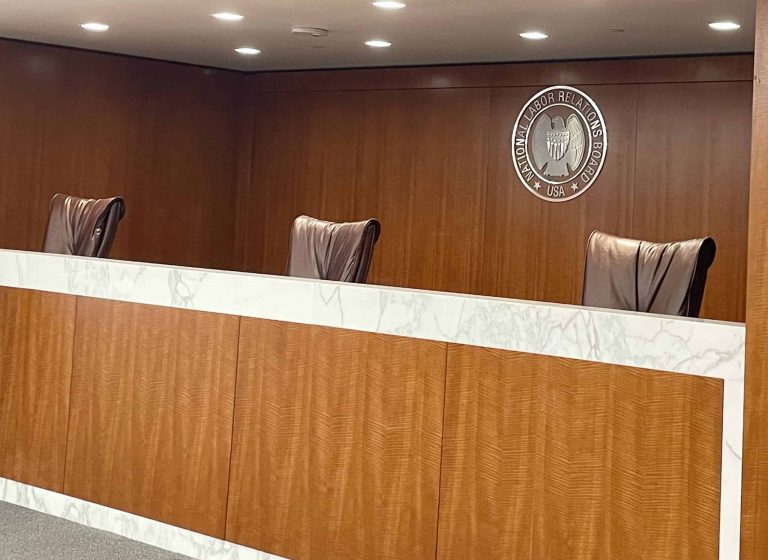This Labor Day, The New York Times reports that more workers are claiming “wage theft,” where workers accuse employers of violating minimum wage and overtime laws, erasing work hours and wrongfully taking employees’ tips. These has been “a flood of recent cases” claiming that employers have violated federal or state wage and hour laws. Recently, a lawsuit involving hundreds of warehouse workers resulted in a $21 million legal settlement with Schneider, a national trucking company. Additionally, “a federal appeals court ruled last week that FedEx had in effect committed wage theft by insisting that its drivers were independent contractors rather than employees.” However, employers claim that these lawsuits are just “opportunistic” and a way for unions and government officials to “score points with union allies.”
The New York Times Editorial Board laments the fact that “five years into an economic recovery that has been notable for resurging corporate profits, the number and quality of jobs are still lagging badly, as are wages and salaries.” Their opinion column claims that “the economy’s lopsidedness is not mainly the result of market forces, but of the lack of policies to ensure broader prosperity. The imbalance will not change without labor and economic reforms.” The New York Times urges the White House to institute a “full-employment agenda that regards labor, not corporations, as the center of the economy.”
A recent study by two professors at the City University of New York Graduate Center indicates that there is a rebound in union jobs in New York City. “The primary cause of the reversal appeared to be a surge in hiring in construction and the hotel industry, not the well-publicized campaigns for higher pay and better benefits by fast-food workers and others earning low wages.” New York City and the rest of New York State have high unionization rates – about 24 percent of city residents and 25 percent of state residents are union members, which is more than double the 11 percent rate for the country as a whole, according to the study, titled “The State of the Unions 2014.”
The New York Times reports that “temps aren’t just employees who sort mail and answer the boss’s phone.” Temping has changed “vastly” over the past decades, with 42 percent of temporary workers employed in light industry or warehouses. However, pay and benefits have not increased as demand for temp workers increases. “There is certainly a lot of evidence that many of these [temp] jobs are not good on health and safety and other working conditions,” said Rebecca Smith, deputy director of the National Employment Law Project
An editorial feature from the Los Angeles Times questions the lack of American memorials to the workers who built the nation’s wealth. Discussing the Blair Mountain, West Virginia gunfight between labor and management in 1921, the article states that “if American labor had holy sites, Blair Mountain would be among them.” However, there is a current legal battle between coal miners and labor history activists over whether Blair Mountain should be allowed on the National Register of Historic Places. After granting the designation, the Keeper of the Register removed Blair Mountain a week after it was added because of the current owners’ plans to strip-mine the site. “A district court judge tossed [a lawsuit claiming that the Keeper’s action was arbitrary and capricious] two years ago, ruling that the plaintiffs didn’t have standing to file the challenge because they could not demonstrate that they had standing — they couldn’t prove they would be damaged by the action. Last week in a 2-1 vote, the Court of Appeals for the District of Columbia Circuit overturned the judge’s dismissal, deciding that the plaintiffs did have standing, in part because removing the surface of Blair Mountain would create a landscape where widely appreciated beauty now exists.” The article laments that one has to “look far and wide to find memorials to the people whose labor created those riches, to those who died in the battles for such modern-day givens as the eight-hour work day and weekends off, and to the organizers who brought the workers together into the unions that helped create the nation’s now-disappearing middle class.”






Daily News & Commentary
Start your day with our roundup of the latest labor developments. See all
December 22
Worker-friendly legislation enacted in New York; UW Professor wins free speech case; Trucking company ordered to pay $23 million to Teamsters.
December 21
Argentine unions march against labor law reform; WNBA players vote to authorize a strike; and the NLRB prepares to clear its backlog.
December 19
Labor law professors file an amici curiae and the NLRB regains quorum.
December 18
New Jersey adopts disparate impact rules; Teamsters oppose railroad merger; court pauses more shutdown layoffs.
December 17
The TSA suspends a labor union representing 47,000 officers for a second time; the Trump administration seeks to recruit over 1,000 artificial intelligence experts to the federal workforce; and the New York Times reports on the tumultuous changes that U.S. labor relations has seen over the past year.
December 16
Second Circuit affirms dismissal of former collegiate athletes’ antitrust suit; UPS will invest $120 million in truck-unloading robots; Sharon Block argues there are reasons for optimism about labor’s future.